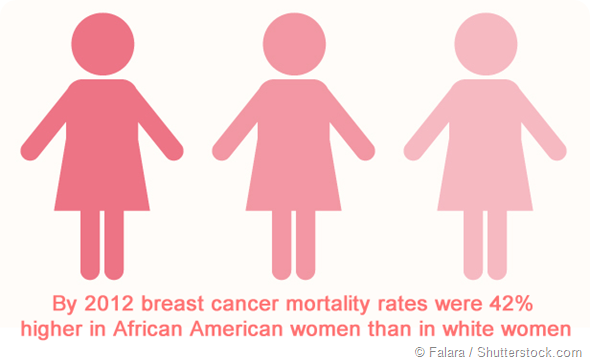Breast cancer statistics published this week indicate a continuing upward trend for rates of breast cancer among African American women in the United States. The incidence of breast cancer in this population of women who have historically had low rates of breast cancer is now approaching that seen among white women.

Breast cancer is one of the most commonly diagnosed cancers in American women, accounting for nearly a third of cancer cases. It is second only to lung cancer with respect to mortality, with over forty thousand breast cancer deaths in US women being predicted for this year alone.
Between 2008 and 2012, there has been little change in breast cancer rates among Whites, Hispanics, and American Indian/Alaskan Natives. In contrast, breast cancer incidence rates showed an annual increase of 0.4% in African American women.
This disparity has meant that overall breast cancer incidence rates for African American women and white women converged for the first time. Breast cancer incidence was in fact higher among African American women compared with white women in seven states (Alabama, Kentucky, Louisiana, Mississippi, Missouri, Oklahoma, and Tennessee).
The increase in breast cancer incidence rates increase among African American women was reflected in a higher mortality rate. Breast cancer mortality rates have always been higher in African American women than in white women but with these increases, combined with a reduction in breast cancer deaths among white women, the gap is getting bigger.
In 2012, death rates were 42% higher in African American women than in white women. The distribution of breast cancer subtypes varies by race/ethnicity and Black women are more likely to be diagnosed with an aggressive type breast cancer associated with a poor survival rate.
On a more positive note, the report also highlighted that the majority of US women with a history of breast cancer were now cancer-free and breast cancer mortality rates have dropped by 36% since 1989.